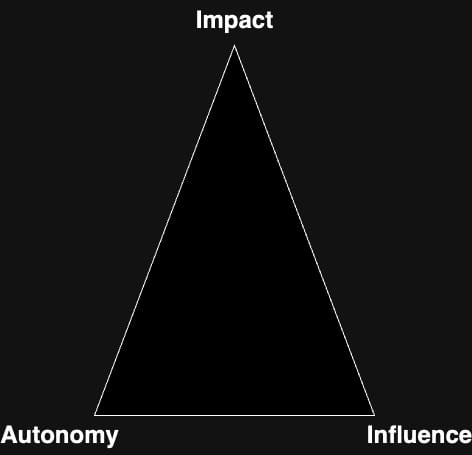Performance Evaluations: A Three-Dimensional approach

Performance evaluations often raise questions for managers and employees alike.
Here are some most common questions
- How are achievements measured?
- What metrics or criteria are used?
- What counts more, quality or quantity of work?
- I've noticed that I've committed significantly more code than my colleague. What factors contributed to their promotion over mine?
These questions highlight the need for a transparency with respect to performance evaluation. This realization led to the exploration and adoption of a three-dimensional framework described below.
Main goal of this framework is to prioritize the measurement of outcomes over outputs, offering a holistic view of performance. It aims to equip individuals with constructive feedback and opportunities for growth in critical areas.
The Three Key Dimensions:
1. Impact
Impact is about the tangible outcomes an individual contributes to the organization. It's measured not just by the completion of tasks but by how these tasks align with and advance organizational goals. Impact reflects the effectiveness of an individual's work and their role in driving the organization forward.
- Examples: Whether it's delivering on Objectives and Key Results (OKRs), hitting sales targets, improving product features, or enhancing customer satisfaction, impact can take various forms depending on the role and industry.
2. Influence
Influence goes beyond individual tasks to encompass the effect an individual has on their peers, team dynamics, and the broader organizational culture. It's about the ability to lead, inspire, collaborate, and contribute to a positive work environment.
- Examples: Influence can be seen in how an employee mentors peers, leads by example, or facilitates effective teamwork, enhancing overall team productivity and morale.
3. Autonomy
Autonomy assesses an individual's ability to manage and direct their work effectively. It speaks to the level of initiative, decision-making, and self-management an employee exhibits, highlighting their ability to contribute independently and take ownership of their responsibilities.
- Examples: Autonomy is evident when an employee navigates complex projects with minimal oversight, demonstrates proactive problem-solving, or leads initiatives within their scope of work.
Visual Representation:

Applying the Framework:
To apply this framework in a practical setting, organizations can:
- Set Clear Metrics: Define specific, measurable indicators for impact in line with organizational goals such as Objectives and Key Results (OKRs).
- Encourage Feedback: Implement regular peer and stakeholder reviews to assess influence within and across teams such as 360 degree feedback etc.
- Foster Independence: Encourage initiative and provide opportunities for employees to demonstrate autonomy in their roles.
By adopting this three-dimensional approach to performance evaluation and feedback, managers can foster a workforce that is more engaged, motivated, and productive. Additionally, incorporating this terminology into regular feedback sessions can help individuals identify areas for improvement and direct their efforts accordingly.
In essence, this holistic framework encourages a more nuanced and balanced view of performance, acknowledging that true value comes not only from what we achieve but also from how we achieve it and the positive influence we wield in our professional environments.